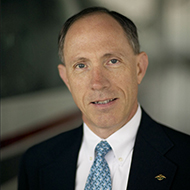 The quote, “First, do no harm”—often attributed, erroneously, to the Hippocratic Oath—does have application to aircraft mechanics. After digging into the patient to fix something, it’s good to ensure we’re not creating a bigger problem. Shops and pilots should always check afterward to see that no harm was done. Accidents, incidents, and “almosts” abound, despite the best of maintenance intentions.
The quote, “First, do no harm”—often attributed, erroneously, to the Hippocratic Oath—does have application to aircraft mechanics. After digging into the patient to fix something, it’s good to ensure we’re not creating a bigger problem. Shops and pilots should always check afterward to see that no harm was done. Accidents, incidents, and “almosts” abound, despite the best of maintenance intentions.
A recent NASA Aviation Safety Reporting System (ASRS) report outlined a near accident involving a Cessna 182. Since the opportunity to discuss maintenance accidents with pilots is rare, the NTSB produced a video that interviews both pilots and the mechanic who did the work.
Flight control systems are perfect places for gremlins to sneak in, and if they’re not caught before takeoff, the results can be disastrous. In this case, the mechanic was highly experienced and had never misrigged a trim system before. However, the elevator trim was reversed so that up was down and vice versa. The two young pilots on the test flight nearly lost the aircraft before figuring out that it was backwards day.
A landmark in maintenance accidents occurred in January 2003. A Beech 1900 regional airliner taking off from Charlotte, North Carolina, crashed when the crew was unable to maintain control. The accident investigation found that the elevator trim system had been misrigged, and to compound the problem, the aircraft was loaded well aft of the allowable center of gravity (CG). Multiple systemic failures included poor training of the mechanics, inadequate oversight by the FAA and the air carrier, and poor checklist discipline by the maintenance shop and quality-control supervisor.
The aircraft flew several legs before the fault was revealed. It was not reversed controls, which would have been much easier to spot. The fault didn’t surface until the aircraft was loaded so far aft of the CG that the pilots needed massive nose-down control input to correct. The aft CG condition was caused by several factors, including the increased weight of the traveling public—the 170-pound standard used at the time was too low.The incorrect rigging restricted the elevator down travel to seven degrees, half of the Beech specification. Both pilots were unable to force the nose down as the 1900 pitched up to more than 50 degrees before stalling.
Thankfully, trim misrigging doesn’t happen often. Beech issued a mandatory service bulletin in 1991 to prevent technicians from interchanging elevator trim mechanisms. Bonanzas, Barons, T–34s, and other aircraft with similar configurations have dual elevator trim actuators unique to the right and left sides of the elevator—if reversed, they will operate the opposite of normal. Beech’s solution was to color-code the actuators (left blue and right black—to make it harder, but not impossible, to foul up).
The best advice is the instruction to verify compliance after maintenance is complete. “After rigging the elevator and elevator tab control system, check for correct movement of the control surfaces…. When the elevator tab control is moved to the ‘nose down’ position, the trailing edge of the tabs should move up.” If every technician and pilot did a manual ground check of flight controls before engine start after any flight-control maintenance, this type of accident or incident would be greatly reduced. It should be SOP.
Our two old nemeses, complacency and distraction, are as prevalent on the shop floor as they are in the cockpit. Checklist discipline is needed to be sure no tools are lurking as stowaways. The tools also have the uncanny ability to lodge in ugly places that may not reveal themselves until after the aircraft is airborne.
Techs are frequently interrupted by phone calls, consultations, or to lend a helping hand to a colleague. Humans do not divide attention nearly as well as we think we do. Pilots have learned the hard way that when a checklist is interrupted, it’s best to start over from the beginning—just to be sure. Ditto on the shop floor.
Following the manufacturer’s procedures exactly is essential. A Cirrus pilot lost control when a split flap condition developed as a result of missing safety wire not securing a critical item. The parachute saved both the aircraft and the pilot, allowing an excellent analysis by the NTSB on exactly what happened. This failure took months and many flight hours to develop.
For pilots, we need to know what to look for on the preflight and really check it. This is easier said than done, especially when we’re in a hurry. For shops, have someone knowledgeable who didn’t do the work verify that everything’s right. Trust but verify—truer words were never spoken when it comes to post-maintenance procedures and verifying that the aircraft really is ready to fly.
Web: www.airsafetyinstitute.org
Bruce Landsberg is a senior safety advisor to the Air Safety Institute.



